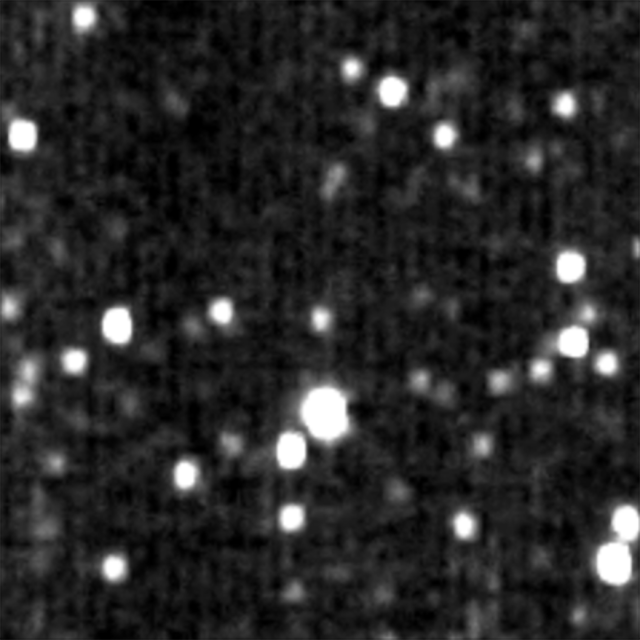CAPSLOCKSTUCK
Spaced Out Lunar Tick
- Joined
- Feb 26, 2013
- Messages
- 8,578 (1.90/day)
- Location
- llaregguB...WALES
| System Name | Party On |
|---|---|
| Processor | Xeon w 3520 |
| Motherboard | DFI Lanparty |
| Cooling | Big tower thing |
| Memory | 6 gb Ballistix Tracer |
| Video Card(s) | HD 7970 |
| Case | a plank of wood |
| Audio Device(s) | seperate amp and 6 big speakers |
| Power Supply | Corsair |
| Mouse | cheap |
| Keyboard | under going restoration |
Nasa's New Horizon's probe may have passed Pluto, but it is still surprising scientists.
It recently took the closest images ever of a distant Kuiper Belt object, capturing a mysterious object passing 3.3 billion miles from the sun.
Scientists say the object, named 1994 JR1, is a 90-mile (150-kilometer)-wide ancient body.

Nasa says the video demonstrates its ability to observe numerous such bodies over the next several years if NASA approves an extended mission into the Kuiper Belt.
When these images were made, 1994 JR1 was 3.3 billion miles (5.3 billion miles) from the sun, but only 170 million miles (280 million kilometers) away from New Horizons.
This sets a record, by a factor of at least 15, for the closest-ever picture of a small body in the Kuiper Belt, the solar system's 'third zone' beyond the inner, rocky planets and outer, icy gas giants.
Mission scientists plan to use images like these to study many more ancient Kuiper Belt objects from New Horizons if an extended mission is approved.
WHAT IS THE KUIPER BELT?
The Kuiper Belt is a freezing ring of debris orbiting more than 4 billion miles from the sun.
It is thought to be the remains of the violent and chaotic collisions that led to the formation of the planets.
There are an estimated 33,000 objects more than 60 metres across in the belt and three dwarf planets.
Astronomer Mike Brown, from Caltech in Pasadena California, has likened the Kuiper belt to the 'blood splatter' left behind by the formation of the solar system.
Although now relatively calm and stable, it is likely to be a dangerous place for New Horizons as it may be filled with unseen debris and space rocks.
It recently took the closest images ever of a distant Kuiper Belt object, capturing a mysterious object passing 3.3 billion miles from the sun.
Scientists say the object, named 1994 JR1, is a 90-mile (150-kilometer)-wide ancient body.

Nasa says the video demonstrates its ability to observe numerous such bodies over the next several years if NASA approves an extended mission into the Kuiper Belt.
When these images were made, 1994 JR1 was 3.3 billion miles (5.3 billion miles) from the sun, but only 170 million miles (280 million kilometers) away from New Horizons.
This sets a record, by a factor of at least 15, for the closest-ever picture of a small body in the Kuiper Belt, the solar system's 'third zone' beyond the inner, rocky planets and outer, icy gas giants.
Mission scientists plan to use images like these to study many more ancient Kuiper Belt objects from New Horizons if an extended mission is approved.
WHAT IS THE KUIPER BELT?
The Kuiper Belt is a freezing ring of debris orbiting more than 4 billion miles from the sun.
It is thought to be the remains of the violent and chaotic collisions that led to the formation of the planets.
There are an estimated 33,000 objects more than 60 metres across in the belt and three dwarf planets.
Astronomer Mike Brown, from Caltech in Pasadena California, has likened the Kuiper belt to the 'blood splatter' left behind by the formation of the solar system.
Although now relatively calm and stable, it is likely to be a dangerous place for New Horizons as it may be filled with unseen debris and space rocks.





































